The REPORTiT – Advanced Reporting for WooCommerce plugin provides a comprehensive suite of customizable settings, allowing you to tailor every aspect of your analytics dashboard and report calculations to fit your specific business workflow.
By adjusting these core parameters, you can ensure the data you see is not only accurate but also presented in the most actionable way for you and your team.
Here is a detailed, step-by-step walkthrough of the general configuration options available at Settings > General for the plugin:
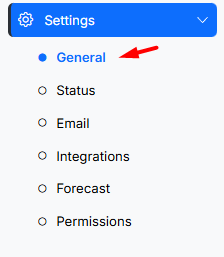
- Week Start: Select which day (e.g., Sunday or Monday) should be considered the first day of the week for all your weekly reporting cycles.
- Date Type: This is a critical setting that determines the primary timestamp used for all your report queries. Your selection here universally affects which data appears across every report.
You must choose one from the following options:
- Created Date: Uses the date and time the order was initially placed.
- Paid Date: Uses the date and time the payment was successfully processed.
- Completed Date: Uses the date and time the order was marked as completed.
For instance, if you select “Completed Date,” and then navigate to the Orders report, it will only display orders that were completed within your chosen date range, not orders that were merely created or paid during that period.
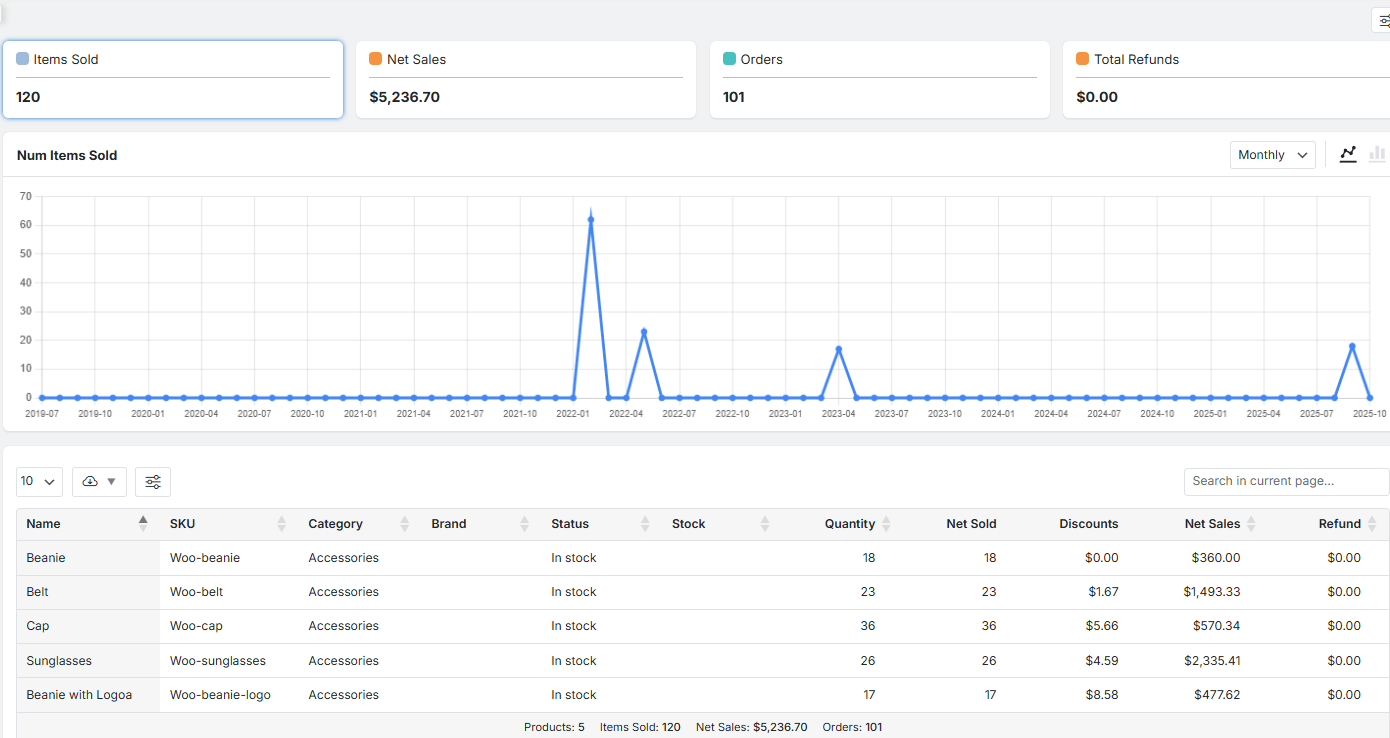
- Custom Dashboard:
This feature allows you to build your ideal dashboard by selecting which widgets are visible.
Simply mark the modules you use most frequently, including: Snapshot, Overview, LeaderBoard, Sales Chart, Table Report
For the leaderboard, you can insert the Number of Items: Specify the maximum number of items you want to be displayed in the Leaderboard widget on the dashboard.
For Table & Chart, you can select the specific data categories for which you want to generate quick-view tables and charts directly on your dashboard. The available options are: Products, Categories, Customers, Coupons, Country, State, City.
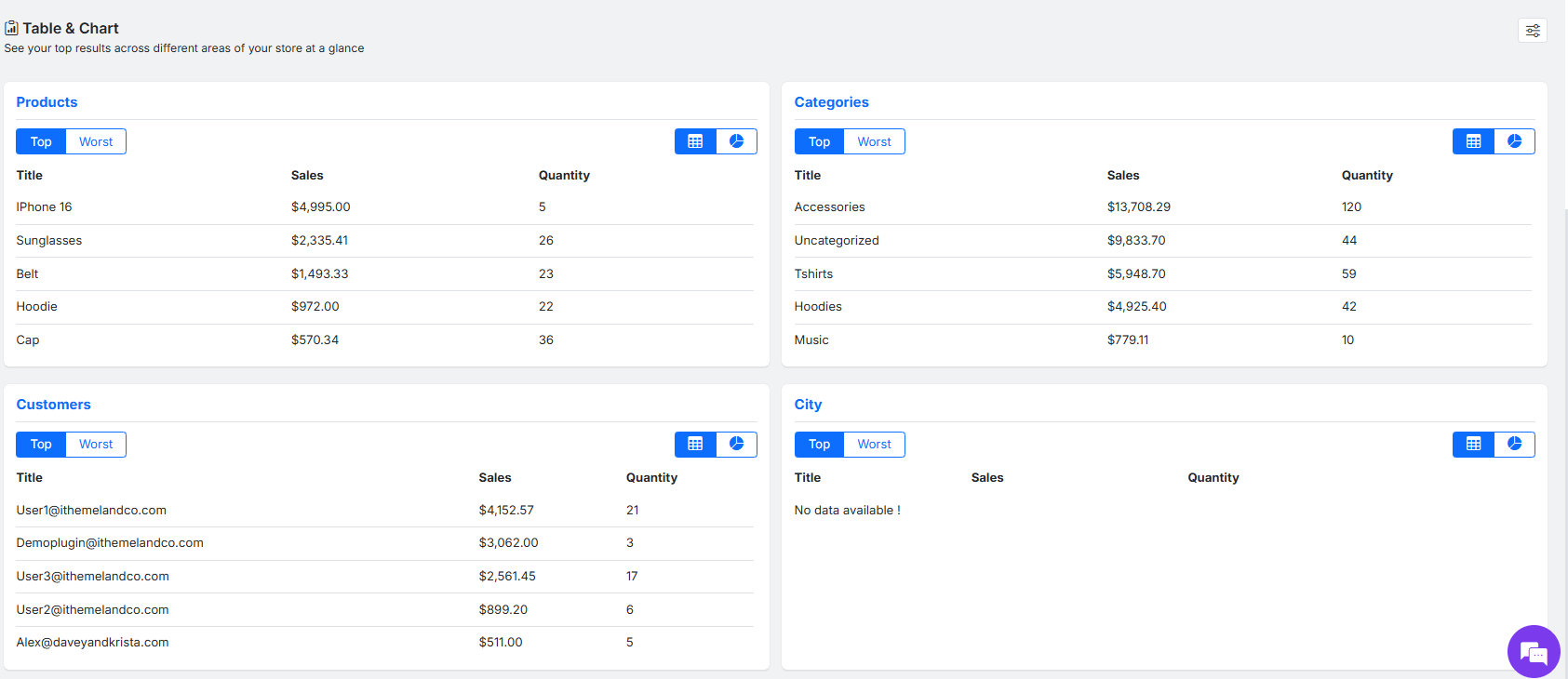
For example, if you only select Sales Chart and Leaderboard, your dashboard will display just those two components, providing a clean, focused view.
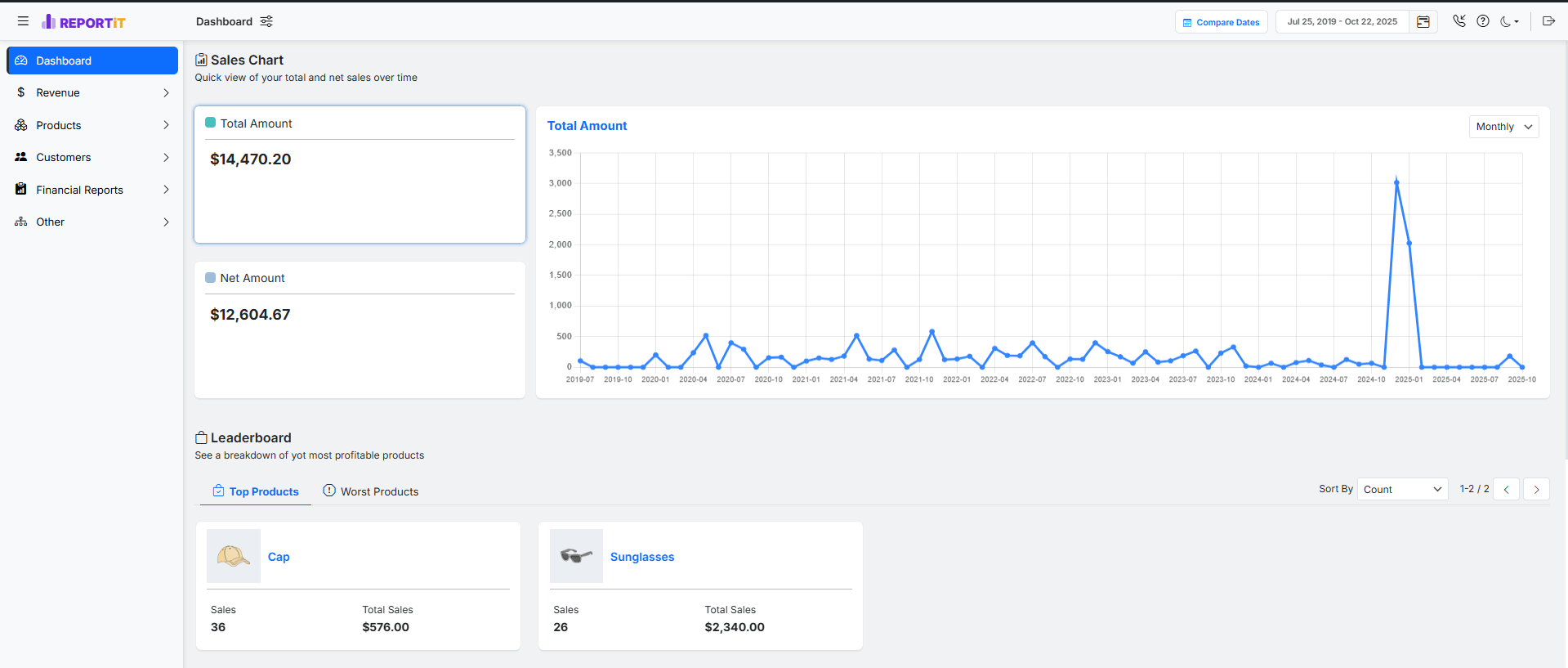
6. Net Sales Calculation: This setting defines how your crucial “Net Sales” figure is calculated. You can select which components should be deducted from the Gross Sales total. Choose any combination of the following:
· Refunds
· Discounts
· Taxes
· Shipping
Your selection here directly determines how this key figure is calculated across all your financial reports and dashboard widgets.
Formula: Net Sales = Gross Sales – (Selected Deductions)
The components you choose to deduct will consistently be applied throughout the plugin. For example:
- If you check Refunds and Discounts, your Net Sales will reflect the final revenue after these two deductions, providing a clear view of your effective revenue.
- If you also check Taxes and Shipping, the Net Sales figure will represent a value closer to your true operational income before other business expenses.
This customization allows you to align the reported Net Sales with your specific accounting practices or analytical needs, ensuring the data you see is meaningful for your business decisions. A store owner might exclude taxes to see pre-tax revenue, while a financial manager might include all deductions for a precise profit calculation.
7. Show “Refunded Order” in separate rows: If you set this option to “Yes,” any refunded orders will appear in their own separate, distinct rows within the Orders report, making it much easier to track and analyze refunds.
8. Billing/Shipping fields: Choose which customer address information you want to have available and displayed in your Orders report. You can select either Billing Information, Shipping Information, or both.

9. Filter Layout: Control the placement of the filter forms on your report pages.
- Horizontal: This option displays the filter form horizontally across the top of the report.

If Horizontal is selected, an additional “Sticky Filter Form” checkbox may appear. Enabling this will make the filter bar remain fixed at the top of the screen as you scroll down the report.
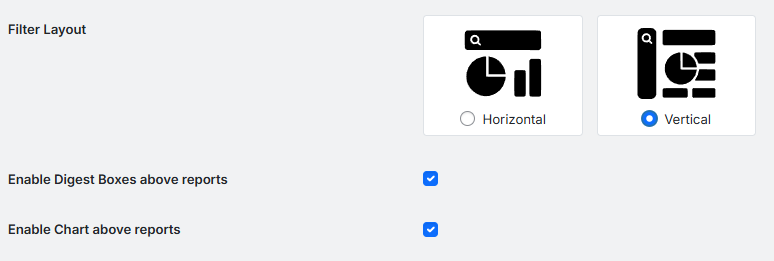
- Vertical: This option displays the filter form in a vertical layout on the side of the report.
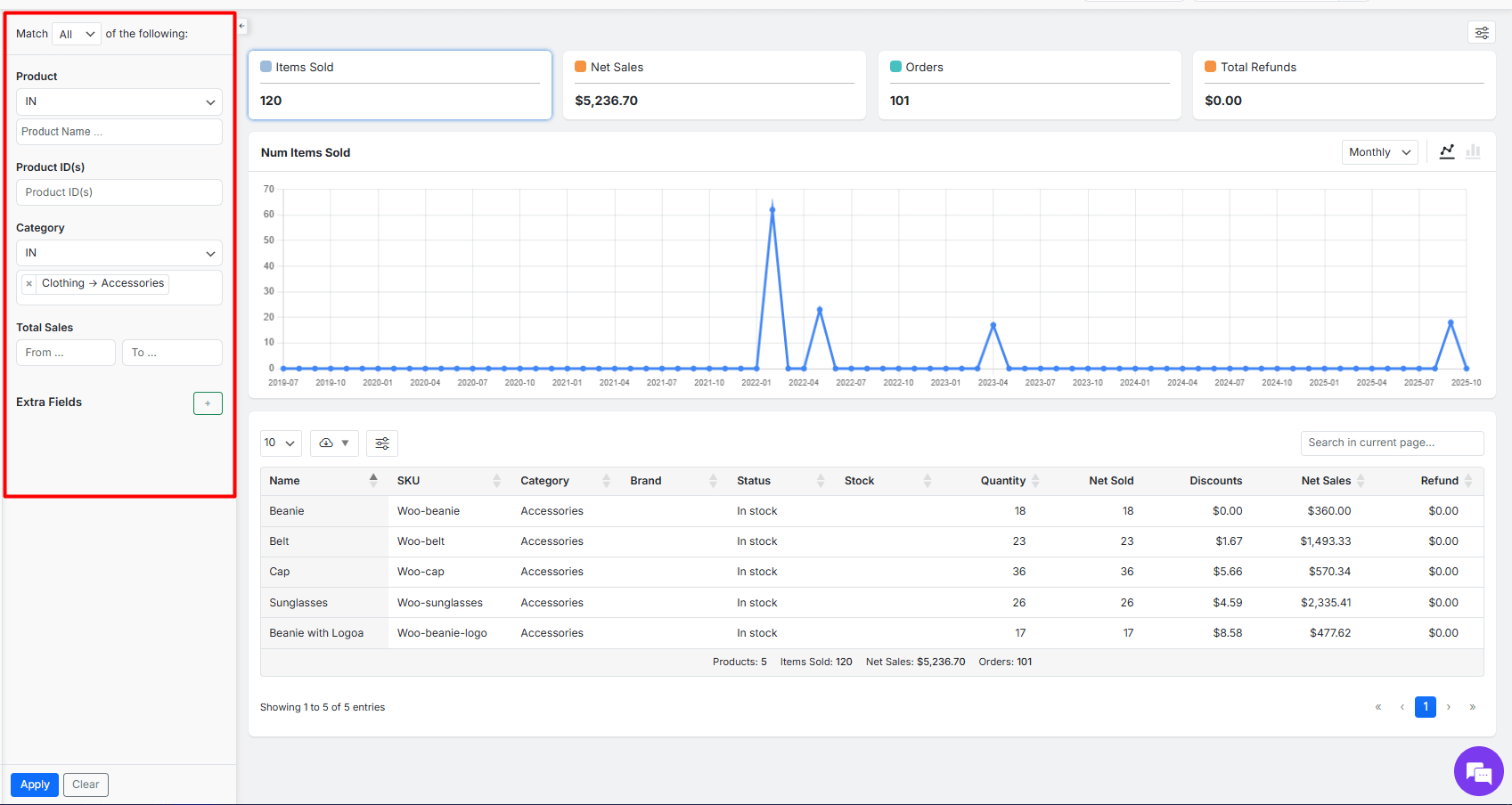
10. Report Page Elements: Fine-tune the layout of individual report pages with these two options:
- Enable Digest Boxes above reports: Toggle the visibility of the summary key performance indicator (KPI) boxes at the top of report pages.
- Enable Chart above reports: Toggle the visibility of the interactive chart on report pages.
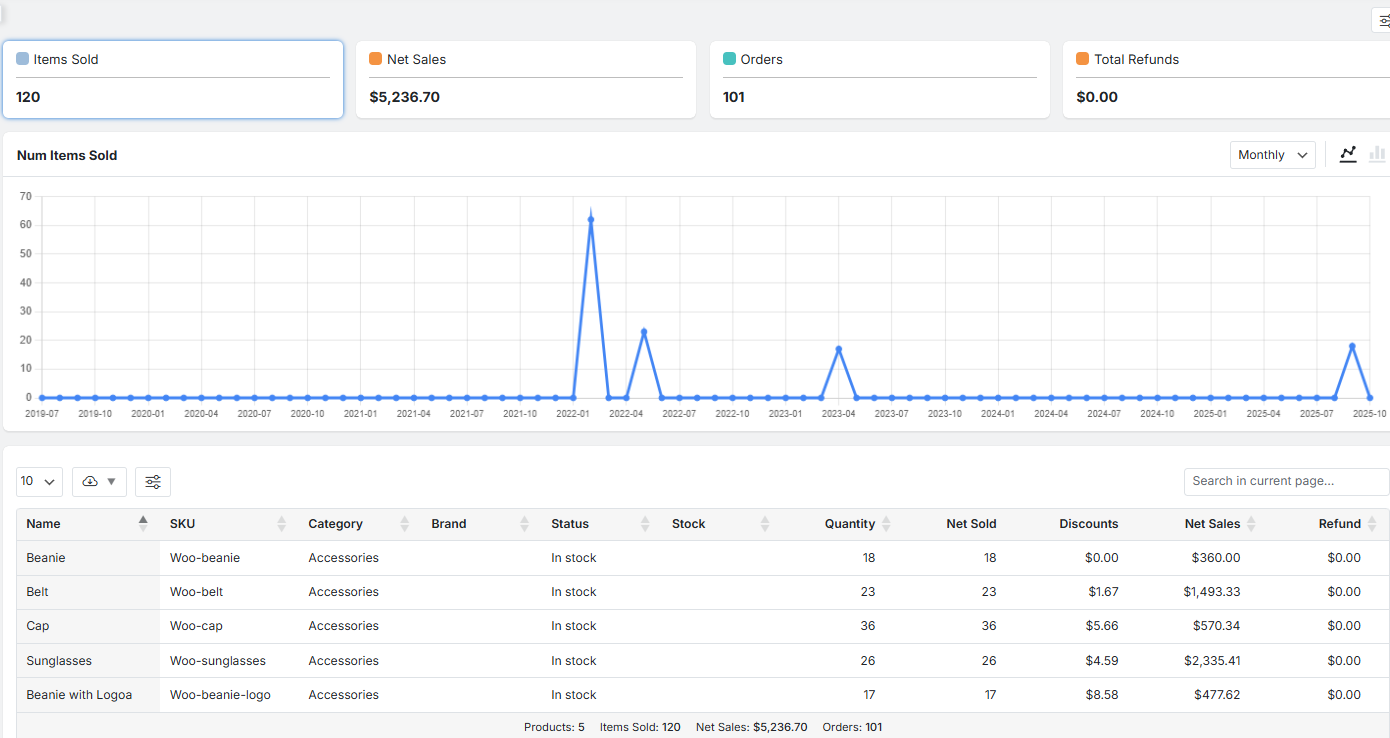

Comments